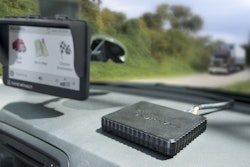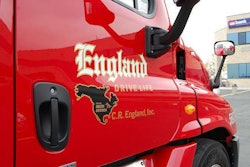Editor’s note: this is the final run in a three-part series on the Internet of Transportation Things. Part one showed how the IoTT is already in the electronics of modern trucks. Part two explored how fleet mobility is changing to more of a “plug and play” environment.

Remote diagnostics lays the foundation to predict future problems and program, or re-program as the case may be, trucks and engines over the airwaves, says Rich Glasmann, vice president of OEM strategy, sales and marketing for Omnitracs.
Imagine being able to remotely adjust engine parameters to decrease the maximum idle time as a truck enters California so as to comply with the state’s emission laws, or to adjust the governed speed when a truck travels through parts of Texas. Or imagine updating the electronic control units (ECU) in the engine and transmission and to change the way trucks operate according to topography and climate.
“You will be able to optimize for fuel economy in certain conditions,” he says. “A lot of those things are in the works today.” Glasmann spent 17 years at Navistar and three years at Volvo before joining Omnitracs. He predicts that all of the examples above could become reality within three years.
Close relationships between OEMs and telematics providers are necessary to make this happen. This is where the Internet of Transportation Things becomes really interesting, as the future model of mobile computing will be very different than what it used to be where carriers were limited to using the hardware, software and wireless communications from a single provider.
Omnitracs as well as other providers will become “hardware agnostic,” he says, meaning that they will develop software to be compatible with a number of third party telematics devices and display options.
In March, PeopleNet announced a telematics partnership with Peterbilt and Kenworth. With its telematics device in these trucks, nothing from a technical standpoint would prevent a third party from accessing data through its mobile gateway, says Mark Botticelli, chief technology officer. The company envisions creating an environment like Apple and Google have done where anyone can develop apps for an in-cab environment and online, and PeopleNet collects a fee.
“It would be nice to have a business model where we are collecting a toll on data,” he says.
Telogis sees the same trends happening with its own OEM partnerships. The likelihood that third party apps will be able to use telematics data from its device raises the bar for competition which is a good thing, says Kelly Frey, vice president of product marketing.
“When you are a cloud-based company, every day you have to earn your business,” he says. “We have to assume that somebody can find the best application that works for them.”
Daimler Trucks of North America installs telematics from Zonar Systems in its vehicles at the factory. “If you like someone else’s program you should be able to run it. I don’t see what stops that,” says Mike McQuade, Zonar’s chief technology officer. “I don’t think it is wise for a telematics vendor to not be open to that concept.”
Deep-dive analytics

Robust back-office tools and powerful analytic capabilities solve that problem by giving the end user the essential information to make decisions and take actions to achieve desired results.
Technology suppliers see tremendous opportunities for collecting and analyzing data from the Internet of Transportation Things as the volume of information from the vehicle and other sources continues to grow.
G.E. Capital Fleet Services, for example, offers a full suite of financing and management services to customers that operate commercial cars and trucks. It offers a core telematics application that collects data for its various cloud-based tools that include route planning and management dashboards.
Its big-data analytics platform, called BrightWorks Insights, uses telematics data and numerous other data sources to do correlation analysis, says Mike Mrosko, telematics product leader at GECFS. Its customers are able to see the correlation of accidents to driving behaviors like speeding, red-light violations, lane departure warnings and more to create a better profile of risky drivers.
Ultimately, IoTT is not about adding new technology for technology’s sake, but creating an ecosystem of apps that gather contextual data to improve and interpret the desired outcomes for productivity, safety and efficiency.












